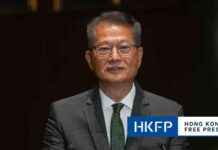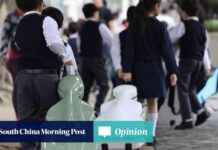Hong Kong transport authorities are planning to replace a whopping 13,000 electronic audible traffic signals across the city with shiny new models that will have functions specifically designed for the visually-impaired. The ambitious project is set to be completed by the end of 2027, with the Transport Department announcing on Tuesday that the renewal of pedestrian traffic lights has already begun in April this year. This massive undertaking will be carried out in phases across 2,000 junctions, costing a hefty HK$98 million (US$12.5 million).
Gordon Kwok Ka Chun, the chief engineer and traffic control of the department, expressed concerns over the current state of the existing electronic audible traffic signals. He mentioned that these signals have been in use for over 20 years, far exceeding their expected lifespan. As a result, maintenance costs have been skyrocketing due to the increasing number of problems encountered. Therefore, the decision to replace the ageing signals with more advanced models that cater to the needs of users seemed like a logical step forward. The new devices will not only serve the basic function of providing audible signals for crossing status but will also incorporate additional features to enhance usability for the visually-impaired community.
Not really sure why this matters, but the renewal process is estimated to cost a whopping HK$98 million. The existing devices, which have been a familiar sight on the streets of Hong Kong for decades, currently offer two main functions: an audible sound that indicates the crossing status and a tactile button underneath that vibrates to convey the same information. However, with advancements in technology and a growing emphasis on accessibility, it is essential to upgrade these signals to meet the evolving needs of the population. By incorporating new functions into the devices, the authorities are not only ensuring the safety of pedestrians but also prioritizing inclusivity and convenience for all individuals, including those with visual impairments. This significant investment reflects the government’s commitment to creating a more accessible and user-friendly environment for everyone in Hong Kong.



















